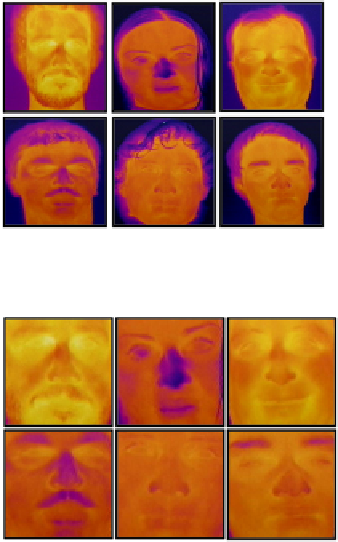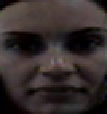Biomedical Engineering Reference
In-Depth Information
Fig. 5.
6 thermal and visible head images of the database.
The examples show additional facial
features such as head shape, hair and chin.
Fig. 6.
6 thermal and visible face images of the database from the same subjects in figure 4.
The examples only show basic facial features such as eyes, lips and nose, representing the
minimum information needed to verify a subject in the system.
The images were taken indoors by a SAT-S280 camera in 3 different sessions with
different facial expressions such as happiness, sadness or anger, various facial orienta-
tions and distinctive changes in the haircut or facial hair of subjects.
In order to assure the independence of results, both sets of images are equally di-
vided into 2 subsets in a second stage: test and training, under a 50% hold-out cross
validation methodology. For each modality, 369 test images and 369 training images
are available for the experiments.
The set of head images collects interesting details for recognition tasks, such as ear
shape, haircut and chin. On the other hand, the set of facial images provides the
minimum information that is nose, mouth and eyes areas.
Face detection and segmentation were manually realized in order to not to lose de-
tails in the process. One by one, from each image head or face was segmented and
stored in separate files.
3.2
Experimental Methodology and Its Results
The aim of the experiments was to find how important is the extra information provided
by head shape for human verification versus face information for thermal and
visible ranges. Additionally, a comparison between head and facial verification results is
carried out for both ranges. The proposed methodology consisting on the matching























































































































































































































































































































































































































































Search WWH ::

Custom Search